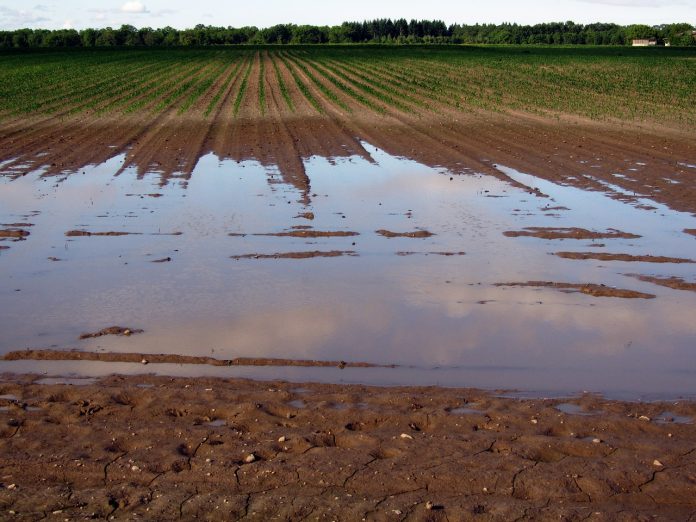Stormwater runoff is water from rain or melting snow that “runs off” across the land instead of seeping into the ground.
This runoff usually flows into the nearest stream, creek, river, lake or ocean. The runoff is not treated in any way.
Polluted runoff
Water from rain and melting snow either seeps into the ground or “runs off” to lower areas, making its way into streams, lakes and other water bodies.
On its way, runoff water can pick up and carry many substances that pollute water. Some — like pesticides, fertilizers, oil and soap — are harmful in any quantity.
Others — like sediment from construction, bare soil, agricultural land, pet waste, grass clippings and leaves — can harm creeks, rivers and lakes in sufficient quantities.
In addition to rain and melting snow, various human activities like watering, car washing, and malfunctioning septic tank can also put water onto the land surface.
Here, it can also create runoff that carries pollutants to creeks, rivers and lakes. Polluted runoff generally happens anywhere people use or alter the land.
For example, in developed areas, none of the water that falls on hard surfaces like roofs, driveways, parking lots or roads can seep into the ground.
These impervious surfaces create large amounts of runoff that picks up pollutants. The runoff flows from gutters and storm drains to streams.
Runoff not only pollutes, but erodes stream banks.
The mix of pollution and eroded dirt muddies the water and causes problems downstream.
Nonpoint source pollution
This is another term for polluted runoff and other sources of water pollution that are hard to pinpoint.
The term nonpoint source pollution (NPS) comes from the federal Clean Water Act of 1987.
There, it is used as a catch-all for all kinds of water pollution that are not well-defined discharges (point sources) from wastewater plants or industries.
What causes polluted runoff?
Polluted stormwater runoff generally happens anywhere people use or alter the land.
People going about their daily lives are the number one source of stormwater pollutants. And most people are unaware of how they impact water quality.
Some common examples include over fertilizing lawns, excessive pesticide use, not picking up pet waste, using salt or fertilizer to de-ice driveways, letting oil drip out of their vehicles and littering.
Developed areas in general, with their increased runoff, concentrated numbers of people and animals, construction and other activities are a major contributor to NPS pollution, as are agricultural activities.
Other contributors include forest harvesting activities, roadways, and malfunctioning septic systems.
Why manage runoff?
Polluted water creates numerous costs to the public and to wildlife. As the saying goes, “we all live downstream.”
Communities that use surface water for their drinking supply must pay much more to clean up polluted water than clean water.
Polluted water hurts the wildlife in creeks, streams, rivers and lakes.
Dirt from erosion, also called sediment, covers up fish habitats, and fertilizers can cause too much algae to grow, which also hurts wildlife by using up the oxygen they need to survive.
Soaps hurt fish gills and fish skin, and other chemicals damage plants and animals when they enter the water.
The quantity of stormwater is also a problem. When stormwater falls on hard surfaces like roads, roofs, driveways and parking lots, it cannot seep into the ground, so it runs off to lower areas.
To give you an idea of the difference a hard surface makes, consider the difference between one inch of rain falling onto a meadow and a parking lot.
The parking lot sheds 16 times the amount of water that a meadow does.
Because more water runs off hard surfaces, developed areas can experience local flooding. The high volume of water also causes streams banks to erode and washes the wildlife that lives there downstream.
Best management practices
Best management practices (BMPs) is a term used to describe different ways to keep pollutants out of runoff and to slow down high volumes of runoff.
Preventing pollution from entering water is much more affordable than cleaning polluted water.
Educating state residents about how to prevent pollution from entering waterways is one best management practice.
Laws that require people and businesses involved in earth disturbing activities — like construction and agriculture — to take steps to prevent erosion are another way to prevent stormwater pollution.
There are also laws about litter, cleaning up after pets and dumping oil or other substances into storm drains.
Green roofs, storm drain grates, filter strips, sediment fences and permeable paving are other examples.













